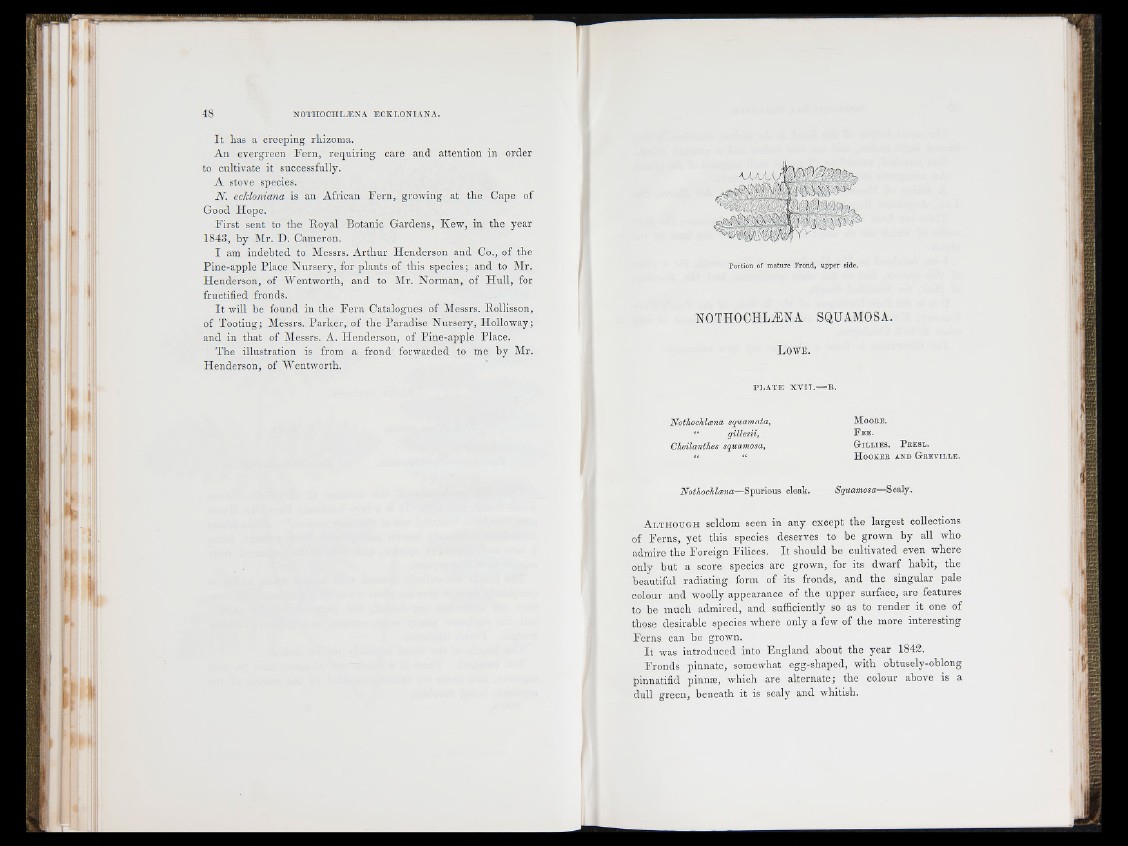
I t lias a creeping rliizoma.
An evergreen F e rn , req u irin g care and attention in order
to cultivate it successfully.
A stove species.
N . cchloniana is an African F e rn , growing at the Cape of
Good Hope.
F irs t sent to the Royal Botanic Gardens, Kew, in the year
1843, by Mr. D. Cameron.
I am indebted to Messrs. A rth u r Henderson and Co., of the
Pine-apple Place N u rse ry , for plants of this species; and to Mr.
H enderson, of "Wentworth, and to Mr. Norman, of H u ll, for
fructified fronds.
I t will be found in the F e rn Catalogues of Messrs. Rollisson,
of T ooting; Messrs. P a rk e r, of the Paradise N u rse ry , Holloway;
and in th a t of Messrs. A. H en derson, of Pine-apple Place.
T he illustration is from a frond forwarded to me by Mr.
H enderson, of "Wentworth.
Portion of mature Frond, upper side.
NOTHOCHLiENA SQUAMOSA.
L o w e .
P L A T E X V I I .— B.
’Nothocldcena squamaia,
“ gillesii,
Cheilanthes squamosa,
M o o e e .
F e e .
G i l l i e s . P e e s l .
H o o k e e a n d G e e v i l l e .
Spurious cloak. Squamosa— BcdXj.
A l t h o u g h seldom seen in any except th e largest collections
of P e rn s, y e t this species deserves to be grown by all who
admire the Pore ign Pilices. I t should he cultivated even where
only h u t a score species are grown, for its dwarf h ab it, th e
beautiful radiating form of its fronds, and the singular pale
colour and woolly appearance of the u p p e r surface, are features
to be much admired, and sufficiently so as to ren d e r it one of
those desirable species where only a few of the more interesting
P erns can he grown.
I t was introduc ed into E n g lan d about the year 1843.
P ro n d s pinnate, somewhat egg-shaped, with ohtusely-ohlong
pinnatifid pinnm, which are alternate; the colour above is a
dull green, beneath it is scaly and whitish.